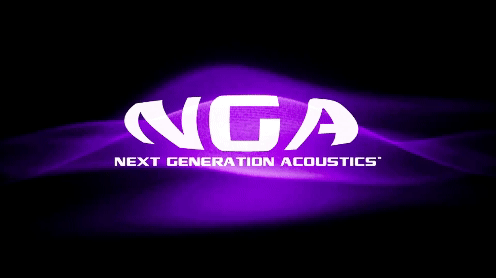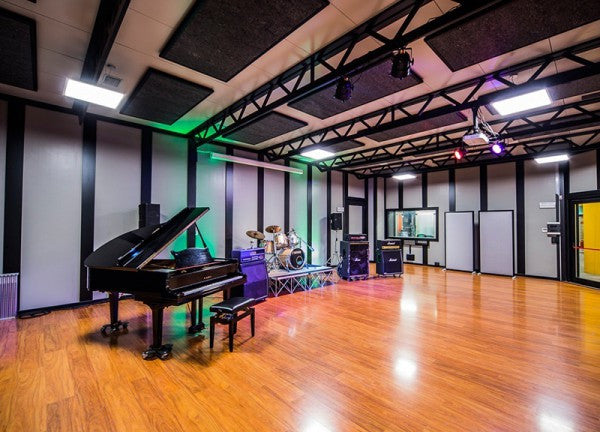HERE ARE 3 OF THE MOST COMMON SCENARIOS WHERE AN ACOUSTIC CEILING BAFFLE IS NEEDED.
1. WALL PANELS DON'T LOOK GOOD IN YOUR ROOM
Often times, because of the architecture of a room, installing acoustic panels on the wall space may not be practical or aesthetically pleasing. Some rooms have custom wood work on walls that needs to be showcased, a brand new paint job that drilling holes into is unfathomable or high traffic areas where you don't want your panels to be touched or knocked into by people etc. Adding acoustic ceiling baffles is an ideal solution for any space where acoustic treatment is needed, but installing them on a wall is not practical.
2. MORE ABSORPTION IS REQUIRED THAN WHAT CAN BE INSTALLED ONTO WALLS
Sometimes, installing acoustical panels to the wall surfaces only doesn't provide adequate absorption to reach a desired acoustic environment. Some reasons for this include not having enough available wall space for acoustic treatments, hardwood or concrete floors that create standing reflections or high ceilings causing excess reverberation. Installing ceiling cloud panels is an ideal solution to make up for this. If a room is very large and/or has very high ceilings this can be a recipe for echoes and long sound decay times. Sometimes this is desired, think When The Levee Breaks - Led Zeppelin. Often times, a cleaner "dryer" recording room is sought instead. This will allow the mixing/mastering engineer to then add & control reverberations & effects simulated in a DAW or recording software.
3. SPOT ISOLATION IS DESIRED FOR MIXING OR RECORDING
Placing acoustic cloud panels over a mixing area or tracking area in a recording room/recording studio is common place in the recording industry. And with good reason... There is not other environment where the demands of room acoustics are as important as a recording studio or mixing room. Often times, adding acoustical treatments to the ceiling in a room can be extremely beneficial in helping achieve a balanced frequency response within the room. Since sound reacts to every and all surfaces in a room - it is imperative that the ceiling is taken into consideration when installing and planning the acoustical treatments for your mixing/studio space. In live rooms, spot isolation can be achieved wherever an acoustic cloud panel is placed. This helps in large live rooms scenerioes by allowing increased isolation where the ceiling baffle is placed. In small studios spaces these can be beneficial by absorbing & controlling first order reflections caused by the ceiling. These reflections can create "muddiness" and/or "slap back" delays (also known as the dreaded "flutter echo") in your recordings. Ceiling cloud panels can be used over drummers to help control reflections from the cymbals and hi-hats, they can be used over vocalists to help with achieving cleaner more isolated sounding vocal recordings or placed over acoustic instruments (ex. brass, strings, guitars) to help achieve a more balanced clear recording organically. In conclusion, this can be tremendously helpful in the mixing process as not as much subtractive EQ will be needed - since your room now already has more balanced frequency response to begin with!



